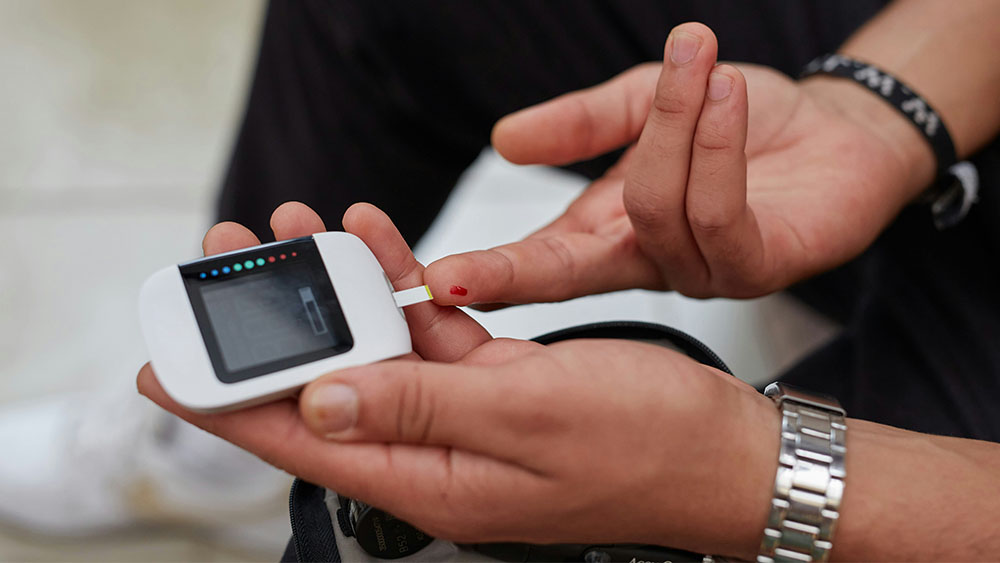How To Support A Loved One Living With Type 2 Diabetes
With World Diabetes Day coming up on 14 November, I've been thinking a lot about just how widespread this condition has become. An estimated 463 million adults worldwide are living with diabetes, thanks to our sedentary lifestyles and increasingly unhealthy eating habits. Yes genetics play a part, but the risk greatly increases with lifestyle choices. It's no surprise then that the prevalence of type 2 diabetes is only set to increase dramatically in the years to come, to approximately 578 million (adults) by 2030. Type 2 diabetes is the most common type of diabetes, accounting for approximately 90-95% of all cases of diabetes in adults.
Such high stats also mean that most of us are living with or know at least one family member who is suffering from type 2 diabetes. Whether they are newly diagnosed or have had diabetes for years, people suffering from diabetes need support, and most importantly, understanding from family members in helping them manage this chronic disease.
My mum is one of those people. Here are some things I’ve learnt about supporting her in her Type 2 diabetes:
Understand what Type 2 diabetes is
Type 1 & type 2 diabetes are not the same and it can be quite insensitive to ask someone if they have the "bad type of diabetes". Neither is good, so the least you can do is educate yourself on what your loved one is dealing with.
Type 1 is an autoimmune disorder which causes the body to attack the insulin-producing cells in the pancreas, meaning that the person makes no insulin and must inject themselves with it daily to stay alive.
Comparatively, type 2 patients produce insulin, but their pancreas is either not producing enough of it or the body isn’t able to use it efficiently. Over time, their insulin-producing cells will decline further if not managed properly with lifestyle changes. Managing daily what one is eating, when and how much, is important because so many factors can impact someone’s blood sugar levels.
For instance, my mum has to be careful about how much bread and oats she can eat because of the glucose spikes they bring, but I have them for breakfast without thinking. That means different foods for both of us for the same meal.
 IMAGE: 123RF
IMAGE: 123RF
Learn how diabetes happens
It's also very insensitive to say something like, “That dessert was so sweet, I thought I was going to get diabetes.” It’s a common myth that excess sugar is the main reason for contracting diabetes. While an inactive lifestyle and poor eating habits do increase the risk factor, age and genetics can also play a role.
Likewise, learn how to recognise the symptoms of low blood sugar (hypoglycaemia) and high blood sugar (hyperglycaemia), and how to handle them in case of an emergency. If possible, I recommend accompanying your loved one to doctor’s appointments so that you know exactly what the situation is and how to help better manage it.
Everyone’s diabetes is different
There is no one-size-fits-all diabetes behaviour nor a management plan for it. Even if something works today, I can assure you that blood sugar levels tend to change over time, and bring with them other issues indirectly, such as problems with eyesight, fatigue and being unsteady on your feet. And it can get triggered by the smallest of things. For instance, if my mum doesn’t sleep well one night, her diet and fatigue are much different the next day, which means that she’s craving more carbs, which will cause a blood sugar spike, leading to more fatigue and dangerous levels of blood sugar. It can be a very vicious cycle if not managed carefully.
Be mindful when doing groceries
Love your pastas and potatoes and fruits like grapes, mangoes and watermelon? Great. But guess what? They’re absolute no-no’s for someone with type 2 diabetes. Carbs are NOT a healthy option at all, because they’re likely to cause dehydration while spiking the glucose levels. Also be very careful with pre-packaged foods and condiments when you’re shopping, since they tend to be loaded with loads of hidden salts and sugars. Nutritious meals have to be well thought out and planned in advance every single day.
 IMAGE: 123RF
IMAGE: 123RF
Be emphatic. Don’t nag
Even though you’re coming from a place of love and care, there is a fine line between nagging and caring, and I often cross it unintentionally to try and help keep my mum safer. But think about it from their point of view. Having someone constantly nagging you and telling you to ‘don’t eat this, and don’t do that’ can be very frustrating… and scary. If you’re helping look after a parent or someone older, try and understand that seeing their health decline is obviously frightening for them, and diabetes is indeed a life-threatening disease because of the ‘silent’ complications it brings with it (think heart attack, stroke, nerve issues and kidney damage).
Scolding and having a tense environment can increase stress levels, which leads to increased glucose levels. If you keep lecturing and nagging, chances are they’re going to shut down in front of you, refuse your help, and just stop listening to you altogether. Also be mindful that swings in blood sugar can make them more irritable and anxious. It’s hard, but please try to be patient and be a good listener as much as possible, and know when to step back for a bit.
For the latest updates on Wonderwall.sg, be sure to follow us on TikTok, Telegram, Instagram, and Facebook. If you have a story idea for us, email us at [email protected].











